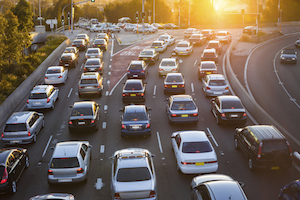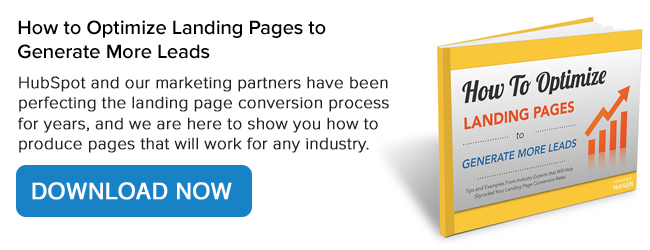 Decisions, decisions. When it comes to where and when to focus your marketing efforts, the decisions never end. Is it more important to generate more traffic, or should you concentrate on improving conversions first?
Decisions, decisions. When it comes to where and when to focus your marketing efforts, the decisions never end. Is it more important to generate more traffic, or should you concentrate on improving conversions first?
It’s a tricky question because it’s a bit like asking if you want to make more money on Wednesdays or on Thursdays? Anybody in business will say that they want to make more money on all days that have a “y” in them.
The Traffic Jam
Of course, traffic is important. Without any visitors, you definitely won’t have any sales. But as this article points out, not all traffic is good traffic.
A good way to think of this is in terms of actual automobile traffic: Imagine you just opened up a hamburger joint a few blocks off a major highway. Your restaurant is awesome, but nobody knows you are there yet, so you decide to put up a big sign along the highway.
Let’s say you design your billboard that says: “Barenaked Ladies!” That might bring in a lot of traffic of people either looking for a Canadian Rock band famous for songs such as “If I had a million dollars” and the theme song for The Big Bang Theory. Or it might bring customers looking for… well. Ahem.
But what happens when those travelers show up looking for witty rock or disrobed women, and instead they find your hamburgers and soft drinks? Sure, your hamburgers are fantastic, but these people wanted something different. They leave, disappointed and angry because you misled them and wasted their time.
So that increase in traffic was not helpful. That was the wrong traffic. Plenty of visitors showed up, but nobody bought anything. This is why most people agree that conversion rates are more important than simply getting more traffic.
On the other hand, if you bring in more of the right traffic, that might equal more conversions. If your billboards have pictures of big juicy hamburgers and cold soft drinks, then you’ll start attracting the right kind of potential customers, and when they arrive they will probably make a purchase, because you are selling exactly what they were looking for.
Conversion Points
However, it’s not enough to just bring in the right traffic. Sometimes you can do that and still not increase your conversion rate. If you have a reasonable amount of good traffic but still aren’t getting conversions, something else might be going on.
Let’s go back to your fast food restaurant. Here comes a family looking for some delicious burgers and fries, which is exactly what you have. But the parking lot isn’t finished, and they can’t find a place to park. They decide to use the drive-through instead, but then the speaker isn’t working. Now you’ve got the right people here, lined up and ready to hand over their money, but they’re going to drive away and head over to the place down the street instead.
You were so close. You had the traffic—the right traffic—but still you couldn’t make that conversion.
That’s why you’ve got to focus on conversions first, so that you can be ready to roll when the traffic arrives. Once you’re prepared—the burgers and fries are ready, the parking lot is paved and the drive-through is fully operational—that’s when you want to start bringing more traffic your way.
How to Increase Conversion Rates: An Example
There are plenty of things you can do to increase your conversion rates. One strategy is checking for what this article calls “nuke buttons,” which are features on your site that inadvertently destroy conversions. Some easily removable obstacles to conversions include “empty shopping cart” and “reset form” buttons. Do you really want to make it that easy for someone to take everything out of their cart, or to accidentally remove all the information they just entered?
Expedia discovered a significant "nuke button" when the company used SAS analytics to investigate why many customers who clicked the “Buy Now” button didn’t finish their transaction. In other words, these customers had gone all the way through the process of selecting their hotel, entering their billing information and clicking on “Buy Now.” Yet somehow they still didn’t end up completing their purchase.
What Expedia discovered was that there was some confusion surrounding an optional “Company” field located underneath the “Name” field. Some customers entered the name of their bank in the “Company” field. Then those customers entered their bank’s address into the “Address” field instead of their home address. As a result, address verification for the credit card would fail and the purchase wouldn’t go through. Simply eliminating that “nuke button” resulted in a $12 million per year profit increase.
How to Increase Both: An Example
This post from KISSmetrics provides a bunch of ways to bring in more of the right traffic, and help make conversions once those visitors arrive. First of all, focus your search engine optimization efforts on your best-converting keywords. Run tests and analyze how your keywords are working. If you’re getting traffic from keywords that aren’t converting, drop those keywords and focus your efforts on the ones that are bringing in customers.
Evaluate the user experience and take out any unnecessary steps to making a purchase. Make sure your site is easy to navigate and that potential customers have easy access to the information they need. While you don’t want your visitors to feel rushed or pressured, once they have decided to make a purchase, enable them to finish that transaction as quickly as possible.
You’ll also want to spend some effort on attracting visitors who might not make a purchase initially, but will return again and again. Run contests or promotions, and update your blog regularly with useful and timely information. Make it easy for readers to bookmark, subscribe, follow and share.
It's a Matter of Priority
So focus on conversions first and be prepared, then move on to bringing in more of your ideal traffic. With the right strategy in place, you won't have to choose between more traffic or better conversion rates—you can have your burger and eat it too.
Want to learn more from Scott Yates and his team at BlogMutt? Subscribe to their "Off The Leash" blog now!


